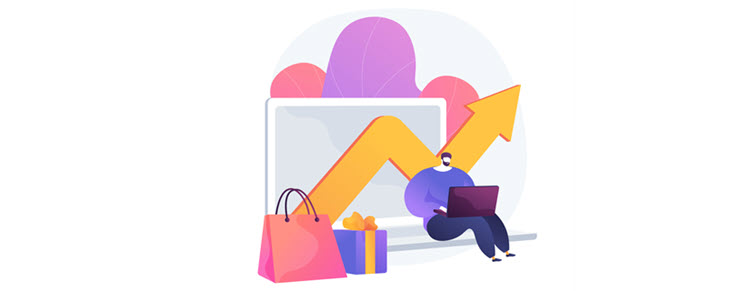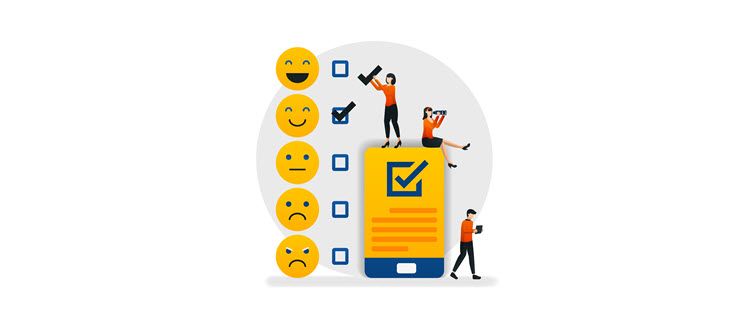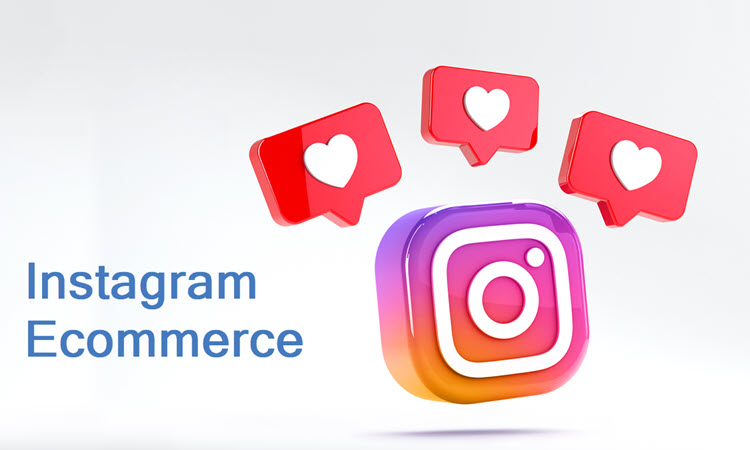Instagram is a photo and video sharing platform that has dominated the social media scene for years. With a growing member base, it gives ecommerce businesses vast potential for marketing and sales of their products. Because it is so visual, the platform is particularly appealing to companies with physical products.
This guide explores strategies for gaining new customers, engaging old ones and increasing sales using Instagram ecommerce solutions.
Instagram Ecommerce Stats

The latest Instagram stats show why it has become an invaluable marketing and sales channel for ecommerce businesses.
- Instagram has 1,440 billion active monthly users. (Earth Web)
- 90% of Instagram users follow at least one business account. (Instagram)
- Instagram users visit 200+ million business accounts daily. (Instagram)
- Business accounts post one-third of the most-viewed stories. (Instagram)
- 44% of IG users use Instagram to shop weekly. (Instagram)
- 70% of buyers look for shopping inspiration on Instagram. (Instagram)
- Millennials and Generation Z are the majority of Instagram’s user base. (Insider Intelligence)
Instagram Ecommerce Strategies

Explore the following strategies to understand how Instagram ecommerce works and how to exploit the platform’s potential.
1. Set Up a Business Instagram Account

The first step is to open a business Instagram account if you do not already have one. Business accounts have features that give access to professional tools (e.g., CTA buttons, engagement stats, etc.), helping improve marketing and sales efforts.
To create a business account, you must have a personal Instagram account. To convert your personal profile to a business account:
- Go to your profile and tap the hamburger icon in the top right corner.
- Tap Settings.
- Tap Account.
- Tap Switch to Professional Account or Add New Professional Account.
- Enter your business details as prompted.
- Optionally, connect your Instagram account with your business’s Facebook page (you can also do this at a later stage).
- Tap Done.
Connecting your business Instagram account to a related Facebook page allows you to instantly share posts from Instagram to Facebook and expand your marketing and advertising reach.
Also, it is a necessary step if you want to leverage the lucrative Instagram Shopping features (more on this below).
2. Optimize Your Business Instagram Account
The first thing users see on your Instagram account page are the profile picture, your username (or handle), your name and bio, and highlights.
Profile picture
Ensure that the profile picture is appealing and captures your brand’s spirit. It can be your company’s logo, or an image created specifically for your Instagram business account.
Username
Your username is the unique name of your account and will identify you to your users. Ideally, it is a variation of your company or brand name but can also be adapted to convey your company’s spirit.
Name
This section will have your business name, but you can also add your niche and important key words. Ensure this section is optimized because Instagram uses the name field in search queries.
Add relevant keywords below your company name to help users identify your business. It can be your niche, best-selling product, a product you want to spotlight, or a phrase that reflects what you do.
Bio
Your bio is the place where you can be creative, leave a good impression and attract new followers (albeit with no more than 150 characters). Examples of helpful details to include in your bio are working hours, promo codes, giveaway information, and tagging instructions. This is also the only place on Instagram where you can place a clickable link so carefully select the URL you want to direct your followers to.
Highlights
Story highlights are a great place to display your products, collections, and add important announcements. You can also use highlights to provide resources, educate and share testimonials.
Optimize and keep up to date all the elements on your Instagram profile page to attract and engage customers. Nothing deters customers faster than a neglected and inaccurate profile page.
3. Analyze Your Audience

Understanding your potential customers is the key to successful product marketing. Some businesses have already identified their buyer persona for other sales channels, such as their ecommerce shop, but their Instagram audience may have different behaviors and preferences.
The following strategies can help you identify the ideal audience for your products on Instagram.
- Use Instagram Insights to learn about your followers’ age, location, gender, and how they engage with your posts.
- Explore the competition, who their followers are and how they engage.
- Use polls or direct messages to learn more about your followers and what they are interested in.
- Pay attention to your target audience’s conversations and learn what is trending among potential customers.
4. Find Followers
Once you have identified your target audience, use proven engagement tactics to turn them into followers. Shape your content strategy according to their interests, preferred content type, and optimal posting time and frequency.
Be accessible and open to communication with potential customers, providing them with ways to contact you on all posts.
Here are quick tips for increasing engagement and getting more Instagram followers:
- Carousels generate higher Instagram engagement for small business accounts with under 5,000 followers, while medium-sized accounts inspire more commenting through video posts.
- Captions that consist of up to ten words increase engagement.
- More than ten hashtags decrease engagement.
- Authentic product reviews and user-generated content inspire trust in followers.
- Polls are a quick and popular way to drive engagement.
5. Take Advantage of User-Generated Content

User-generated content (UGC) is when a brand reposts a photo, video, or text created by another Instagram user. Reposting user-generated content is a great way to deliver content that excites users. The creators enjoy receiving credit from the brand and other users feel the brand is authentic and relatable.
This content strategy hits two birds with one stone:
- It involves little effort. You, as a brand, simply need to ask a user to repost their existing content or inspire users to use your products in exchange for featuring them on your feed.
- It inspires confidence in your product. People trust authentic reviews by other users like themselves.
6. Create Original Content
Instagram is a highly visual platform, and users have high standards regarding a posts’ aesthetics. To keep them engaged, employ various strategies to ensure the content remains fresh. While staying receptive to shifting trends, maintain your brand’s recognizable image using brand colors, fonts, and other established design elements.
Some strategies for creating content that engages users include:
- Showing products in action.
- Showing product unboxing.
- Using behind-the-scenes product events (e.g., how the product is made).
- Creating anticipation before product launches.
- Using polls to let followers choose their preferred type of content.
- Using current and seasonal events to create posts around trending topics.
- Offering promo codes and discounts – but sparingly, so as not to devaluate your products.
- Using fun video tutorials to educate viewers about your products or niche.
7. Use Customer Reviews

Like UGC, customer reviews serve as social proof that inspires potential followers’ trust in your brand. To acquire honest, authentic reviews, encourage satisfied customers to share their experiences with your products.
Ask for reviews directly in an email, DM, or in the comments. Choose the right time to do it – for example, after they purchase a product, tag your product in their post, or make a positive comment about your brand or product.
Read about the different types of customer feedback and learn how to encourage customers to leave comments.
8. Partner with Influencers

Influencer marketing is gaining traction among sellers. In some industries, it is the best way to increase brand awareness and drive more traffic to a web shop. This is because people trust their favorite influencer’s experience more than a company’s marketing efforts.
Find influencers for your product promotion who are in a similar niche, share your target audience’s interests, and appeal to your potential customers.
9. Use Hashtags Wisely
Hashtags are an essential research tool and marketing tactic on Instagram. They help followers express their interests and find relevant brands, and they enable brands to appeal to potential followers.
Research popular hashtags related to your industry, brand, and products and include them in your posts. Use the right hashtags for each post and story to attract your target audience but avoid hashtag stuffing (over ten hashtags per post).
Use branded and niche tags when promoting your products and include location tags if you are appealing to a location-specific audience.
10. Create a Posting Schedule
Once you learn when your followers are active and how they engage with your content, create a posting schedule to maintain presence with your posts. For a more streamlined process, automate it with Instagram scheduling apps.
11. Use Instagram’s Ecommerce Solution
Almost half of Instagram users buy products every week via the platform. And 61% of them are more likely to buy a product if it is tagged.
Instagram allows businesses with physical goods to highlight products from their product catalog within an Instagram post to make it shoppable. This is a new solution for ecommerce businesses, and it includes a set of features called Instagram Shopping.
Instagram Shopping
Instagram Shopping enables ecommerce businesses in to turn their Instagram accounts into shoppable storefronts. To do this, they need to:
- Comply with Meta’s policies and their commerce’s eligibility requirements.
- Set up a shop and create a product catalog in Meta’s Commerce Manager.
- Choose a checkout option (Instagram Checkout for US businesses or website checkout).
Once Meta approves the shop, start tagging products to posts and stories.
When an Instagram user taps on a tag, they are directed to a Product Detail Page with information about the product, including the price, specifications, and different media across Instagram where the product is featured. Make sure all items in your catalog are up to date, with accurate prices and product specifications.
If the user decides to buy the product, they will be directed to your website to make the payment or to Instagram Checkout, depending on your chosen checkout option.
Instagram Checkout
Instagram Checkout is currently available only to US ecommerce businesses. It allows buyers to complete the payment without leaving the app. Businesses with Instagram Checkout also have additional features at their disposal:
- Shopping partner permissions. Feature used to extend product tagging options to chosen shopping partner accounts.
- Live shopping. The ability to tag products during live product presentations and convert viewers into buyers in real-time.
- Product launches. A feature used to announce product launches; followers can preview the product and set reminders to buy the desired item when it becomes available.
12. Promote via Instagram Ads
Two-thirds of surveyed Instagram users are not bothered by ads when watching videos. This is a great incentive for businesses to pair their organic content with paid ads and expand their reach.
Instagram ads are subtle, and the only thing differentiating them from native content in user feeds is the Sponsored icon on top and, in some cases, a call-to-action button below the ad. They appear in user feeds, stories, during the Explore section browsing, and Instagram Shop browsing.
Available Instagram ad formats include:
- Images
- Videos
- Carousel
- Stories
- Reels
- Instagram shop
Use the ad format type that best aligns with your target audience’s interests. Paid ads will help you gain more product and brand visibility, and grow your customer base, so make it a regular part of your Instagram marketing strategy.
13. Use Omnichannel Marketing Strategies

Today’s average customer is active on multiple social media platforms and browses through different sales channels before making a purchase. Just 0.1% of Instagram users use only this social media platform. Most of them are also active on Facebook, Twitter, TikTok, YouTube, and other platforms.
That is why a smart marketing strategy requires an omnichannel marketing approach, which integrates all the customers’ preferred sales channels, allowing for a smooth shopping experience.
Instagram’s parent company, Meta enables linking your Instagram account with your Facebook page and Messenger to sync contacts, facilitate interaction with users, and even implement live chatbots. This makes it easier to transfer your Instagram followers to your omnichannel system and convert them into customers.
14. Leverage Instagram Analytics
Instagram Insights is a native tool that helps you track performance and optimize your Instagram ecommerce strategy. This valuable feature is one of the main reasons to open a business account.
Instagram Insights allows you to measure your performance based on many factors, including:
- Your follower count and demographics.
- Followers’ active times (time and day).
- Which content drives engagement.
- Which influencers are popular among your audience.
- How users interacted with content.
This data is invaluable in helping you refine your marketing strategy to reach your marketing and sales goals.
Conclusion
With a surge of daily Instagram users, the platform is a great opportunity for ecommerce businesses whose audience shop via Instagram.
Use the available tools and proven tips for optimizing your brand’s reach on Instagram, always tracking ecommerce KPIs to continue improving your strategy.
